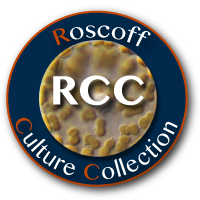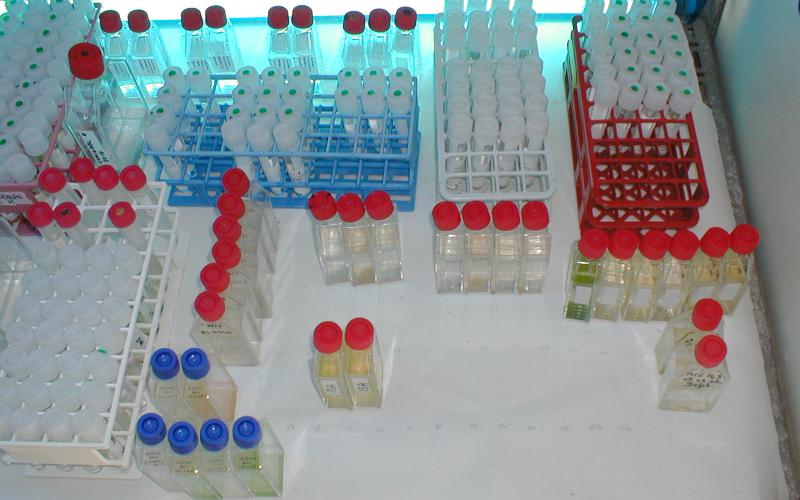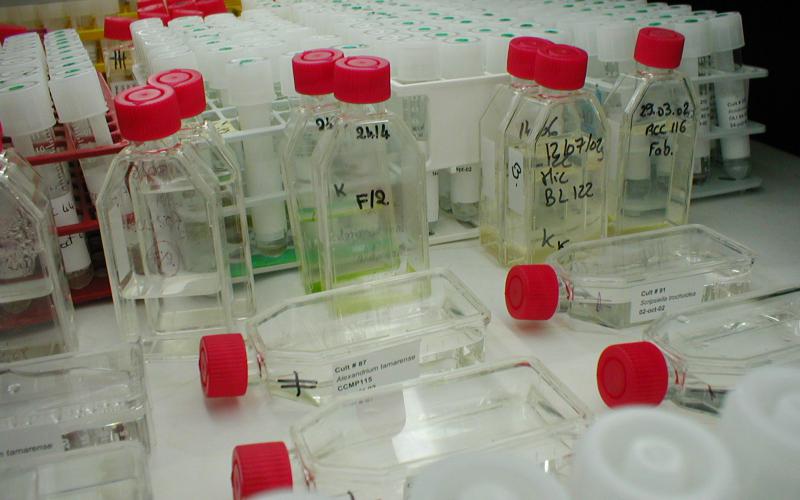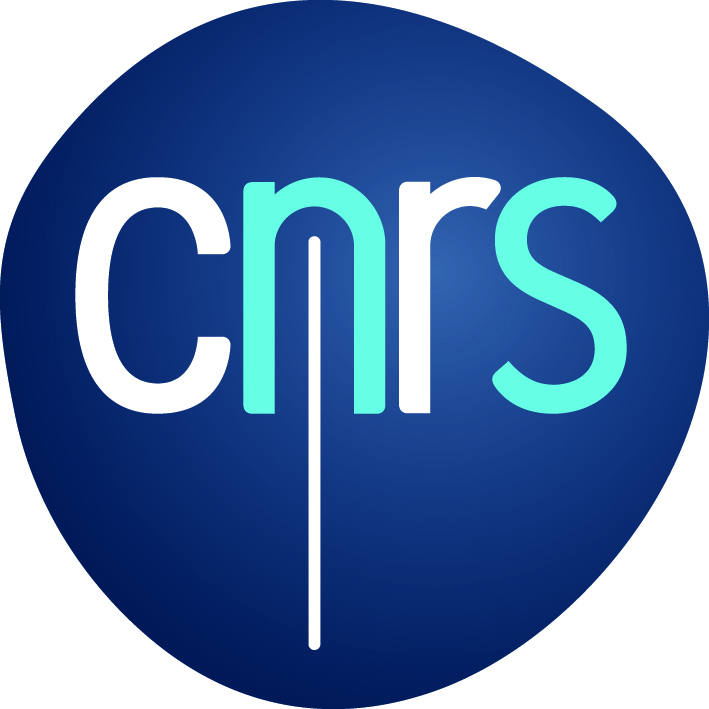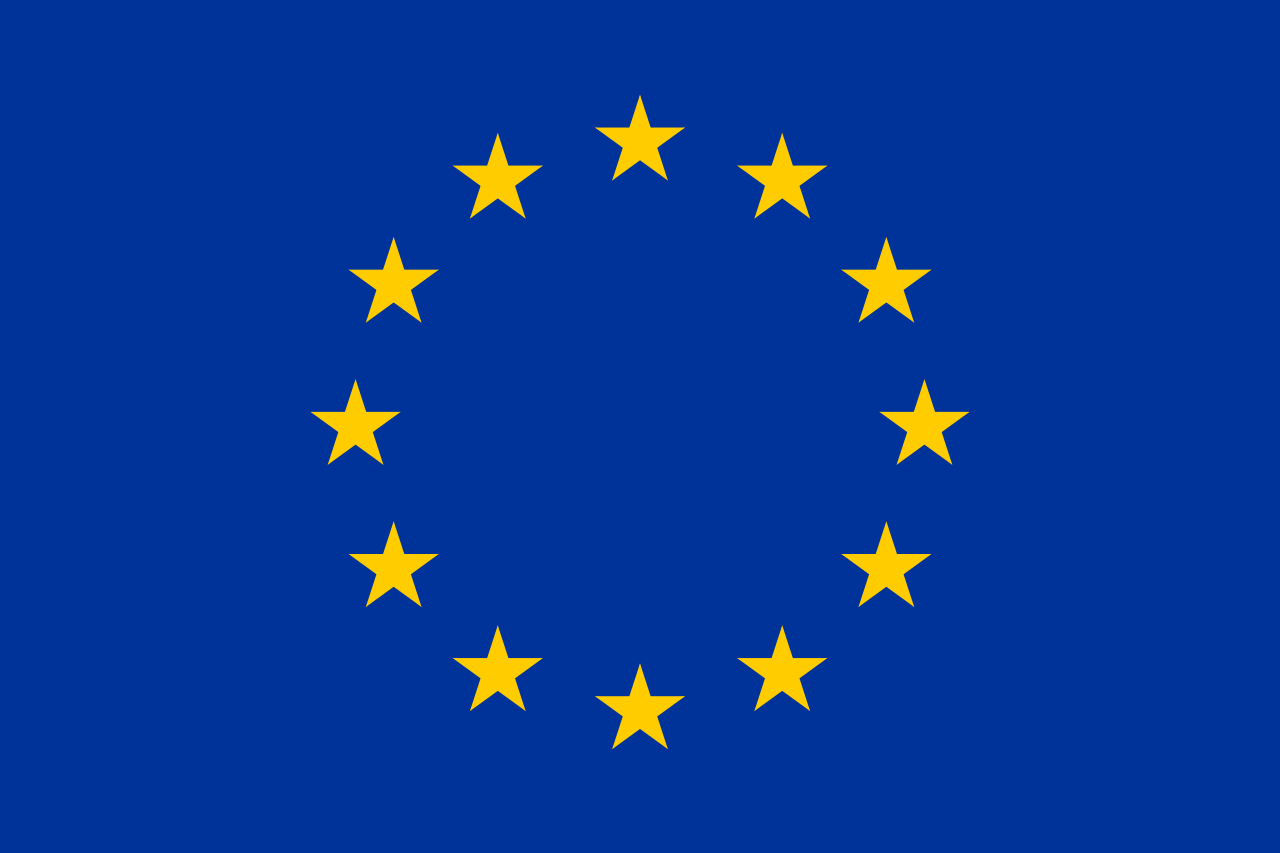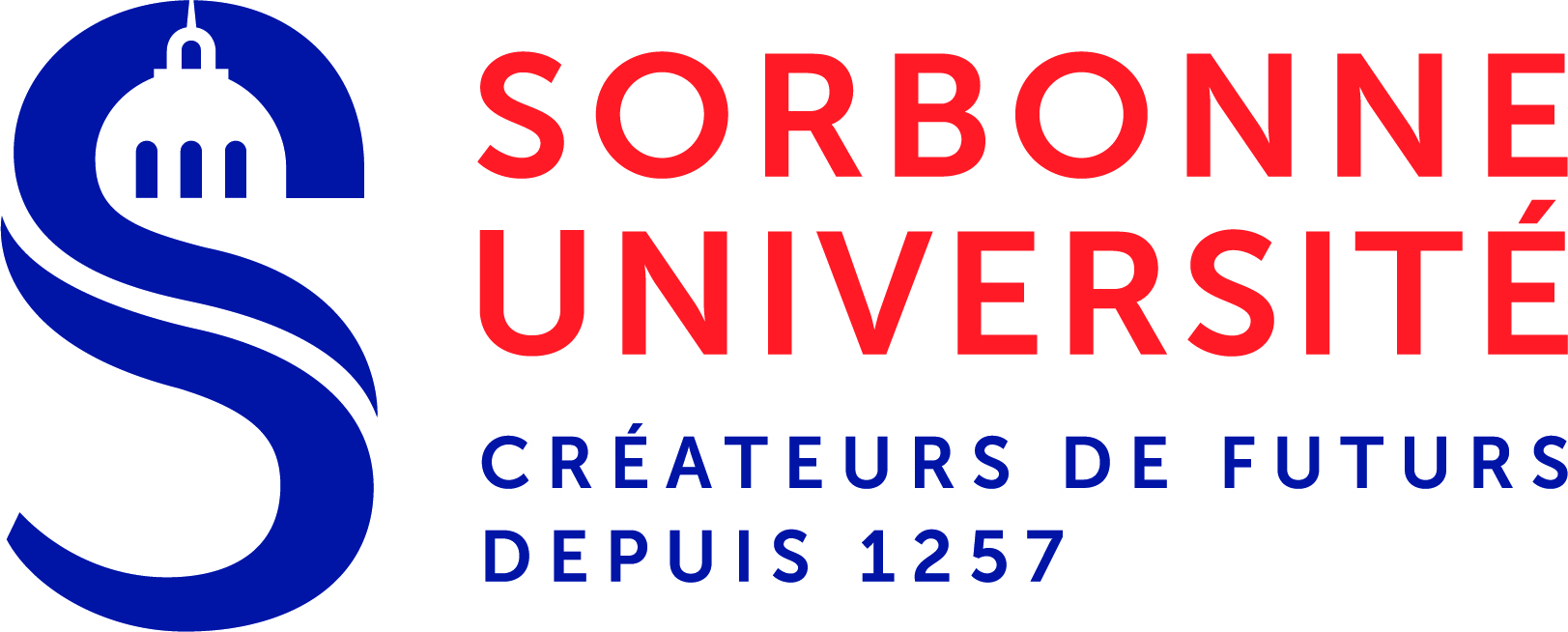Before ordering
The individual strain pages on this web site provide a range of information about suitable culture conditions for each strain (temperature, medium, light intensity, etc.). Before ordering strains, please ensure that your laboratory has suitable equipment and conditions for the reception and maintenance of the cultures.
Equipment, supplies and media
Equipment
- Laminar Flow Hood – used to transfer cultures;
- Filtration system – used to prepare media;
- Autoclave – used to sterilize recipients and media;
- Climate-controlled culture room or culture cabinet.
Media
Each culture grows in a specific media that you can either prepare yourself or purchase from the RCC as described here.
Supplies
| Item | Supplier | Reference |
|
Polycarbonate filter (0.22 µm pore size) |
Millipore |
GSWPO9000 |
|
Glass fibre prefilter |
Millipore |
AP1507500 |
|
Daylight Neon tube |
Sylvania |
F58W/54/765 |
|
Starter for Neon tube |
TABUR |
00007698476 |
|
Ventiled single-use sterile culture flasks |
Starlab (or Nunc) |
CC7682-4825 (or 136196) |
|
Culture tubes |
CML |
TCU12PS25 |
Health and Safety
To avoid any risk of contamination of the natural environment, all culture residues must be sterilized (by autoclaving or by treatment with bleach) before being discarded.
Culture transfer should be undertaken using standard sterile microbiological techniques (work under a laminar flow hood or near a bunsen burner flame, clean all surfaces with 70% ethanol, etc.).
Culturing protocol
Before receiving live cultures
You need to make sure :
- you have prepared culture media;
- you have prepared an environment with suitable temperature and light;
- you have sterile containers (flasks, tubes or erlenmeyers) to grow the cultures;
- you have a way to monitor culture growth (e.g. microscope, flow cytometer).
Culture media
The media used by the RCC are most often prepared from seawater collected off Roscoff (salinity ca. 33‰), stored for at least two months in darkness, then filtered on 0.22µM filters (Millipore filter GSWPO9000 plus Millipore prefilter AP1507500) and autoclaved or pasteurized.
If your laboratory does not have access to natural seawater, you can try using artificial seawater made from mixtures of salts (consult the “culture media” section on our website). Please note that we cannot guarantee growth of cultures in artificial seawater based media (except for cyanobacteria for which it is recommended to use Red Sea Salt artificial seawater).
Sterile (autoclaved and/or 0.22µM filtered) nutrient and trace metal stocks must be added to the sterile seawater under a laminar flow hood. You should not autoclave vitamins (sterilization by 0.22µM filtration and storage at -20°C).
Temperature and Light intensity
Check the growth temperature for each strain on the RCC website. We generally use one of 3 conditions :
- 4°C for Arctic and Antarctic strains
- 15°C for temperate strains
- 20 or 22°C for tropical strains
You can grow the cultures either in a special dedicated room with temperature control or a culture cabinet. Strains will generally not grow on a bench in the lab, you need a temperature-controlled environment.
All RCC strains are exposed to a 12H/12H or 14H/10H day/night light cycle. We use "daylight" neon tubes (Sylvania Daylight F58W/54/765 ref : 0001440+ starter ref :00007698476). Light intensity for culture maintenance rarely exceeds 100 µEinsteins.m-2.s-1. In most case you can maintain them with slower growth at lower light intensities (e.g. 20 µE).
Some of our cultures (some cyanobacteria) grow under blue light, for which we use a « Moonlight Blue 183 » filter (Minet Eclairages Scéniques). However, this is not really critical and they can probably grow as well in white light.
Culture flasks
RCC strains are routinely maintained in single-use sterile 50 mL polystyrene flasks with a ventilated filter cap (Starlab ref CC7682-4825 or Nunc ref 136196) or single-use sterile 10 mL polystyrene tubes (CML ref TCU12PS25). Growth is usually better and easier to check in culture flasks. Our strains generally also grow well in Erlenmeyers or other glass flasks.
Monitoring culture growth
There are several ways to control growth:
- Culture colour : this will work for most easy to grow cultures but some cultures develop very slowly and you may never be able to see much colour;
- Microscopy : the easiest way is to use an inverted microscope adding a drop of the culture on a slide or directly looking at the culture flask;
- Flow cytometry : this is the preferred method for cyanobacteria such as Prochlorococcus which are very difficult to see by microscopy.
Receiving live algal cultures
After receiving your order, RCC staff will contact you in order to arrange a suitable delivery date. We usually use DHL courrier service. Upon pick-up of the package, we will send you the DHL tracking number by e-mail. Packages should be delivered within one to three days (depending on location). Upon delivery, cultures should never be stored in a cold room or a freezer, as this will kill them very quickly. Please warn your mail or reception-room of the imminent arrival of the package - they should store it at room temperature and inform you immediately of the arrival of the package.
After opening the package, transfer the flasks into a culture room or culture cabinet with the appropriate temperature and light conditions. Cultures are subjected to stress during transport and we therefore recommend that you wait for one to two days before transferring cultures into fresh medium. Most of our strains must be transferred every 2-3 weeks with 1/10 to 1/50 dilution in new medium.
If the cultures are not in good shape upon arrival, please notify us immediately with details (e.g. picture of the flask, microscopy images). Note that none of cultures are axenic, so you will always see some bacteria in the cultures. Under our terms and conditions, if you notify us of any problems within two weeks we will send you a new culture free of charge (except for shipping).
Special instruction for viruses
Upon delivery of a virus – host pair of cultures, store the flask containing the virus at 4°C in darkness. The host microalgal culture needs to be transferred in your culture incubator upon delivery as described above. The host must be growing in exponential phase to efficiently propagate a virus strain. The host culture can be diluted 1/10 – 1/50 (vol/vol) into fresh culture medium and incubated for 3 to 4 days under appropriate conditions. The viral suspension can be added using a virus:host ratio of 1:10 – 1:50 (vol/vol) and incubated under host growing conditions. You can use an aliquot of non-infected host culture as a control to monitor cell lysis. Cell lysis is detected by complete clearing of the host culture (usually 3 – 7 days after viral inoculation depending on the viral strain, the initial inoculation ratio, and host growing conditions). The resulting lysate can either be stored at 4°C or will need to be transferred as soon as possible. Do not keep the lysate for an extended period of time under host growing conditions as it may induce the development of resistant hosts. It is possible to filter the lysate through 0.2 µm filters (use PES, PC or GF filters, but avoid cellulose acetate membranes) to remove remaining host cells and debris. Viral suspensions can be stored for several months at 4°C (usually 3 – 4 months). Be aware that viruses are sensitive to intense light irradiance, UV, and heat.
If you need any further advice, please contact us at rcc@sb-roscoff.fr
| Attachment | Size |
|---|---|
| 466.59 KB |
